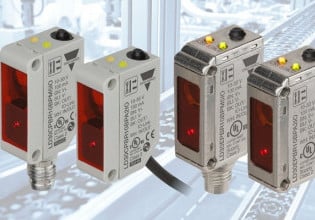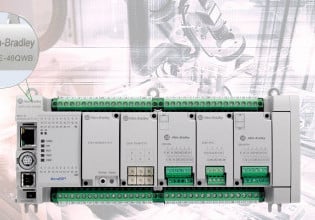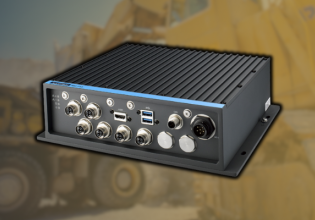Top Five Machine Safety Risks and Automated Solutions for the Shop Floor
Each machine on the factory floor comes with risk; learn common safety risks and corresponding automation solutions.
Safety on the factory floor is the main objective of risk assessments (RA). The investments made in RA, such as team formation, resource allocation, documentation, and reporting to the regulatory body, should improve man, material, and machine safety.
If the RA activity does not result in safety on the factory floor, it is purposeless. This also leads to non-conformity with the regulator guidelines. Through their expertise and experience, the regulatory bodies can detect these non-conformities—the outcome results in fines, and in some cases, complete withdrawal of accreditation status.
There are different types of machines on a factory floor, each with its own risk. The severity and likelihood of risks change with the machine and process. For example, risks associated with a machine with rotary parts are different than machines with linear parts. However, the risks can relate to every machine, no matter its purpose or operation.
Let’s look at some common risks found on the factory floor.
Risk 1: Machine Operation
Machine operation can be a deadly risk, even if the scale of operation or process is small. When a person comes in contact with the running machine, different subsystems such as electrical and mechanical pose severe symptoms for the human body.
Some operations require the operator to adjust running machines, such as packaging or printing machines.
During maintenance, machine guarding is bypassed for inspecting components and troubleshooting activities. This elevates the risk of personal injury for the maintenance staff.
Automation Solutions: Machine Operation
The risk associated with these activities can be best prevented by alerting the persons before the operation starts. Standard methods of alerting include:
- Tower light for visual indication: Tower lights are installed on the machine top and are easily visible. It consists of three lights: green, yellow, and red. The green light indicates machine ready condition, and the flashing green light indicates the machine is in operation.

Figure 1. An example tower light on an industrial printing machine. Image used courtesy of Banner Engineering
- Audible sound: Audible sound is an added safety feature to alert the people around before machine operation. The machine generates an audible sound after the operator presses the start button, then the machine starts with a time delay until the audible sound is completed. This feature alerts people in the location.
Risk 2: Hazardous Machine Operation
Some machines are hazardous, and all the persons should be at a safe distance during operation. For example, in high-speed mixers or machines with high temperature and pressure, the operator—after making necessary adjustments—stands at a safe distance before he or she turns on the machine. Otherwise, coming into the machine’s vicinity during regular operation can become deadly.
Automation Solutions: Hazardous Machine Operation
- Guard interlock or limit switch: Mechanical protective guards are installed to prevent personal access and entry during machine operation. The guards are fitted with a limit or interlock switch. Limit or interlock switches continuously detect the protective guard and stop the machine when operators open the guards.
- Light curtains: For some machines, operators need to put their hands near the machine during certain operations. A light curtain will automatically shut down machine processes when a hand or object passes through the light beams.
Figure 2. Video used courtesy of SICK
- Temperature switches: Temperature switches monitor the heat level and will not allow machine operation until the temperature drops below the threshold.
Risk 3: Abnormal Condition During Machine Operation
It is common for the machine to go in an abnormal condition, even when supervised by experienced and trained operators. Whatever the reasons are, it becomes difficult for the operators to control and stop the machine.
Automation Solutions: Abnormal Condition During Machine Operation
- Emergency button: Emergency buttons are installed to stop the machine immediately without completing the current cycle or process. Emergency buttons are installed at the main control panel, at the rear, and at both ends of the machine to give operators easy access in an emergency condition. The operator cannot use the regular stop button in emergency conditions because stop button algorithms require the current cycle or process to complete.
- Tower lights: A sensor near the machine can sense abnormal conditions and then have the tower light indicate an abnormal condition is present by lighting the yellow or red lights.
- Audible sound: Similarly, a sensor can send information to an audible sound alarm to indicate an abnormal condition, such as a high temperature or pressure.

Figure 3. A range of industrial temperature switches. Image used courtesy of Danfoss
Risk 4: Input Phase Missing
Nowadays, machines are powered by three-phase electricity. The three-phase electric supply consists of three wires, each supplying an individual phase to the machine. Within a machine, individual electronic components are working on single-phase and three-phase electric supply.
Due to several reasons, such as wire disconnect or power supply problems, one or two phases can go missing. The absence of one or more phases can damage the component’s internal circuitry or wiring. For single-phase components, the absence of a single or more phase ultimately “kills” the device.
Automation Solution: Input Phase Missing
- Input phase loss detector: Phase loss detectors are installed in the electrical panel to detect the absence of the input phase and monitor the incoming power phase. If a phase loss occurs, the corresponding relay is activated. The relay activates the alarm and stops the machine’s operation. When the missing phase is restored, the phase loss relay removes the alarm condition, and the machine can perform its normal functions.
Risk 5: Motor Problems
Essential machine operation is not possible without motors. When a motor runs in industrial equipment, it suffers from stresses, loads, and malfunctions. This can result in motor problems such as internal wiring damage, main shaft problems, and many more.
Automation Solutions: Motor Problems
- Variable frequency drive (VFD): VFD is the main driver for the motor, and no motor operation is considered complete without it. The VFD is not used as a sole motor safety device, but its versatile options are uses for motor safety. The can VFD enter an alarm state, thereby halting motor operations until the problem is removed.

Figure 4. VFDs for conveyors, cranes, or mills up to 2600 kW. Image used courtesy of Schneider Electric
- Overcurrent: Overcurrent condition indicates a problem within the motor’s internal structure, such as the winding and rotor.
- Overload: Overload safety stops the motor when it starts taking extra current, other than its rated value. It enables technical persons to check the mechanical structure of problems and saves the motor. This condition occurs when the attached mechanical structure jams and resists operation. The jammed mechanical structure forces the motor to consume more current than its rated value and damages its internal wiring, causing it to burn.
Several things can go awry during machine operation, so RAs are important tests to run on the shop floor. The goal of these RAs and automated mitigations are to prevent loss of life, damage to persons or property, and financial damages. However, there are automation solutions that can mitigate these safety risks. Lights, sound, guard limits and interlocks, emergency buttons, input phase loss detectors, and VFDs are all solutions to implement on the factory floor to help control these machine operation risks. Tell us about machine failures you’ve experienced in the workplace. Was it successfully or unsuccessfully mitigated?






